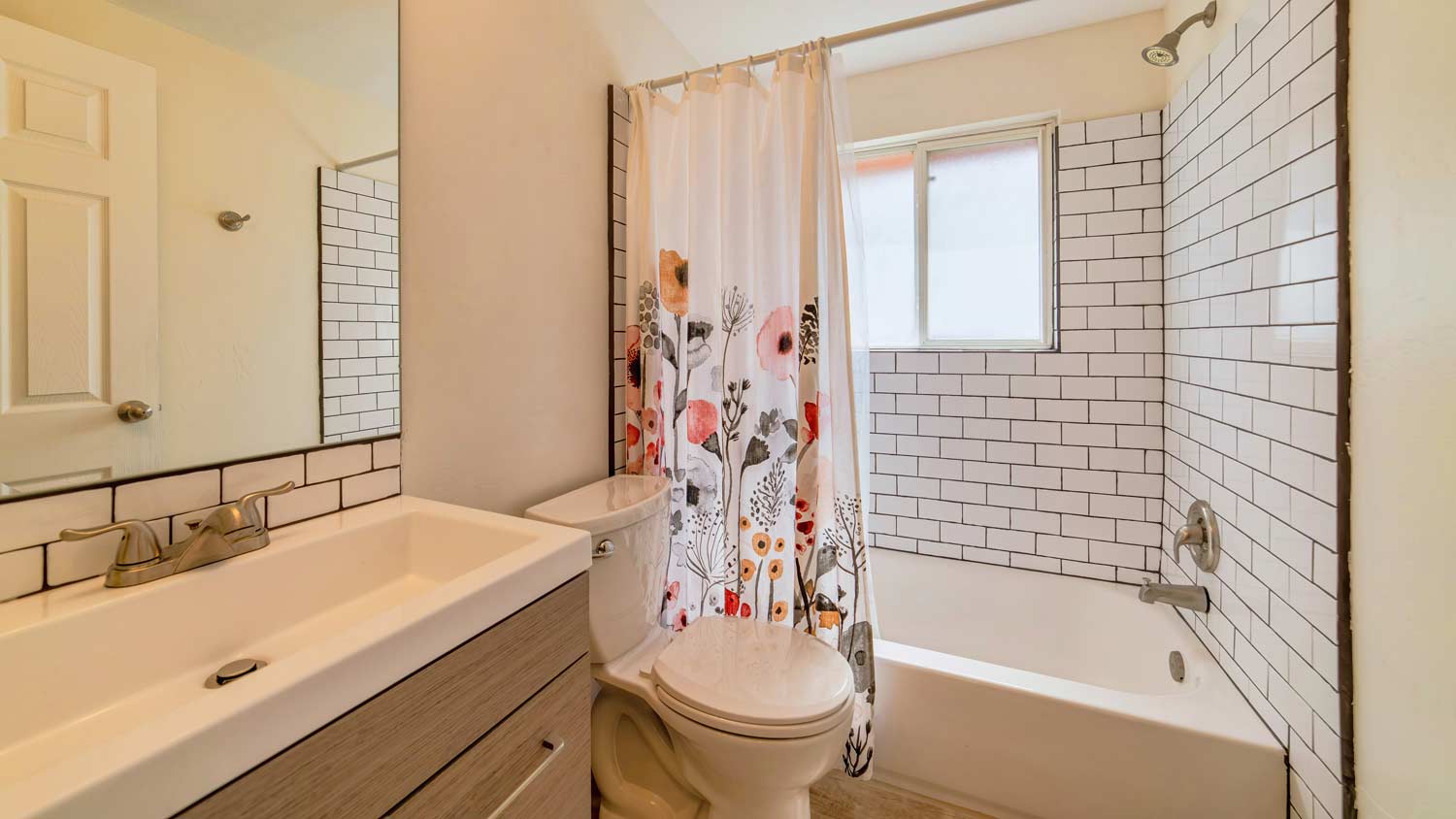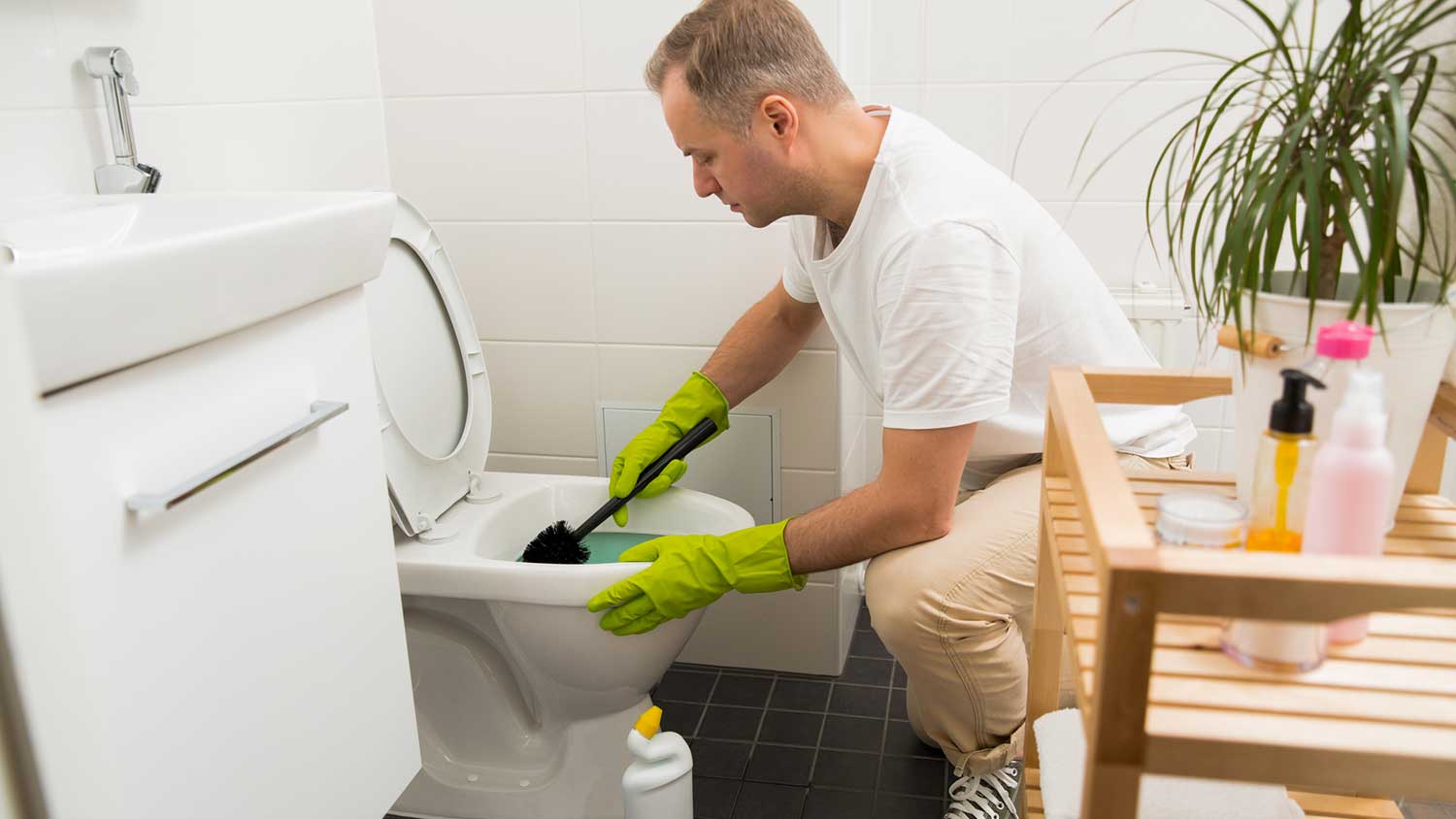How to Test for Mold in Your Home
See if your home gets a passing grade after a mold test


Thinking that you have found mold in your home can be scary, as you may worry that it will make you and your family sick. Not knowing exactly what you’re seeing–or if the mold is hiding behind a wall–could cause undue stress. Rather than spend your time worrying, use this guide to learn how to test for mold in your home, and take the necessary steps to remove it.
Indicators of Mold
You don’t want to spend time and money on learning how to test for mold in your home if there’s no reason. Instead, look for a few indicators that you may have mold before you choose to test or schedule an inspection.
Visible Signs of Mold
Seeing mold on your walls or ceilings is the most obvious indication that you have a problem with mold. It often looks like dark, fuzzy spots that can resemble a stain. Some molds have white or orange flecks on the dark surface. However, mold can be almost any color or texture.
Mold often has a damp, musty smell as well. If you see something that you think looks like mold, and it has this odor, it’s time to test. If you notice this odor in areas where you cannot see any mold, you could have mold growth inside your walls.
Reactions Similar to Allergies
If you and your family members are struggling with breathing problems, nasal congestion, a sore throat, itchy eyes, or similar symptoms that don’t seem to have an explanation, a high number of mold spores may be present. During an initial exposure to mold spores in the air, many people may feel like they are having an allergic reaction.
Through prolonged exposure, you may notice stronger symptoms. You could end up with a respiratory infection that leaves you with a fever or coughing up blood. Don’t wait for these serious symptoms to appear. Figure out how to test for mold when you notice unexplained allergy symptoms.
Known Areas of Moisture Problems
Mold needs significant moisture to begin to grow. If you have areas where moisture persists for whatever reason, testing for mold is a good idea. Some moisture problems can occur in instances like:
Flooding from rain
Broken water pipe
Leaky roof
Condensation on water pipes
Condensation on HVAC ductwork
Seeping concrete foundation
Bathrooms without exhaust fans
Near indoor dryer vents
Leaky bathtub or shower
Testing Mold Safely
If you decide to test for mold on your own, rather than hiring a pro, you need to do so safely.
Wear Protective Gear
If you will be working around mold or inspecting it up close, always wear safety goggles, gloves, and an N-95 respirator. The respirator should cover the nose and mouth. You should be able to find this gear at a local hardware store.
Cover Exposed Skin
Don’t leave the skin on your arms, legs, or neck exposed. Consider using a full-sized coverage suit or a coverall that protects your clothing and skin. The full coverage suit may have a hood and protection for your shoes, too.
Minimize Disturbance of the Mold
Even when wearing safety gear, you should try to avoid pulling the mold loose or jostling it. Each time you make contact with the mold, you could release its spores into the air, where they could spread to other areas of your home. Conduct your test as carefully as possible.
Three Ways to Test for Mold
After donning your safety gear, you can test for mold in your house in one of three ways:
Use a Cotton Swab and Bleach
For a DIY testing method on a growth area that you can see, mix one part of bleach to 16 parts of water in a bowl or small bucket. Dip a cotton swab into the mixture and touch the area that you think is mold. If the area is mold instead of grime or dirt, it should lighten in color immediately.
Buy an At-Home Testing Kit
Most home improvement or hardware stores will have mold testing kits that you can purchase for between $10 and $50. The kit often includes a swab or a scraper for collecting some of the growth that you think is mold. The kit may tell you that mold has been detected, or you may have to send the sample to a lab. Again, this test only works if you can see spots that you believe are mold growth.
If you want to test the air in your home for elevated mold spores, you can find an air quality test at the home improvement or hardware store, as well. You will most likely have to send this sample into a lab for testing.
Hire a Professional Mold Inspector
The third option involves relying on a pro to do the inspection for you. The inspector visits your home and runs a number of tests. The cost of a mold inspection from a pro averages around $600. If you have a large amount of square footage to inspect, you could pay up to $1,000.
What Happens in a Mold Inspection From a Pro?
When you hire a pro to do a mold inspection, the pro will search for visible signs of mold growth throughout your home. Additionally, they may look for signs of excess moisture that could lead to mold formation.
The mold inspector may take air readings as well, looking for a higher number of mold spores in the air than expected. It can take anywhere from 2 to 6 hours to complete the inspection.
If signs of mold do exist, the inspector may take samples for testing. Results should be back in 1 to 2 business days in most instances. Should the inspector determine you have a mold problem that needs remediation, they may give you a list of options and a checklist to follow to keep you and your family safe.
Should I Get a Mold Inspection?
Professional inspections are costly, so you may be wondering—do I need a mold inspection? If you see active mold growing, you should call a mold inspector as soon as possible.
However, if you are unsure if you are seeing mold, or smelling mustiness related to mold inside the walls, you may want to test for mold in your house first. If your test shows you may have a mold problem, you should contact a local mold inspection professional for a thorough mold inspection.
Don’t put a test or inspection off. The earlier you catch a potential mold problem, the easier—and often cheaper—it is to solve.
What to Do if a Mold Test is Positive
If you have a positive mold test, it’s important to reach out to a mold remediation expert as quickly as possible. Mold can spread quickly over several days and weeks, so you do not want to wait to treat the problem. Waiting could drive up the cost to fix the problem, and increase the risk of illness for your family.
For help with hiring a mold remediation company, you can seek recommendations from family, friends and trusted resources for finding a local mold remediation pro. The pro you hire may also have recommendations for a remediation company you can use to kill mold in your home.
Until the pro is able to remove the mold, avoid disturbing it. Don’t cover it or try to clean it, as this will likely cause more mold sports to enter the air inside your home. The remediation company may have recommendations for you to follow, too.
How Mold Impacts Your Health
People will have different health reactions to the presence of mold. Some people react severely, while other people may have no symptoms. Some of the most common reactions to mold exposure include:
Difficulty breathing
Irritated throat and nasal passages
Increased congestion
Coughing and wheezing
Eye irritation and itchiness
Skin rash
Fever
Lung infections
People with compromised breathing due to asthma, lung disease, or a weakened immune system are more likely to have a severe reaction to mold exposure.
Mold exposure usually results in short-term health issues. As long as you remove the mold from the home, your health should return to normal. However, children and elderly people could have lingering symptoms.
Because any type of mold could negatively impact your health, it’s best to take steps to prevent mold and avoid exposure. Call a pro who inspects for mold and can do the proper tests. If you have mold, hire a local mold removal pro to remove it and prevent it from coming back.
Where Does Mold Commonly Grow?

Mold is most likely to grow in places with constant dampness and a lack of ventilation. Dampness can come from leaky pipes inside walls, moisture seeping through a basement foundation, flooding, leaking roofs, and similar issues.
Some of the most common areas where you could find mold include:
Basements
Attics
Bathrooms
Near windows and doors
Under leaky appliances
Near leaky plumbing pipes
Near a floor drain
Under wet carpet or insulation
Near wet cardboard storage boxes
Near air conditioning condensate drain lines
Under leaky roofs
If your home has high humidity, mold could grow anywhere. Techniques to lower the humidity in your home may include using a dehumidifier, operating fans, and running your air conditioner more often.
How Much Does Mold Remediation Cost?
The final mold remediation cost will depend on the extent of the mold infestation. An average cost is about $2,200, but you could pay significantly more or less. If the mold is inside your walls, for example, removing it will be more challenging, which will increase the price you pay. If it’s a small patch, located on easily-accessible drywall, the cost could be less than average.
You may have additional costs to replace items that suffered mold damage, such as drywall on the ceiling or walls.
Frequently Asked Questions
Certainly, DIY mold tests are not perfect when trying to determine whether you have a mold problem. They could give you a false positive reading, or they may fail to detect mold that’s behind a wall, especially if the infestation is still small. Ultimately, you should seek a mold inspection if the DIY test gives you a positive result, just to be certain. And if the test is inconclusive, it’s probably worth seeking an inspection from a pro.
Black mold, also called Stachybotrys chartarum, may create toxic chemicals as it grows, called mycotoxins. This means you and your family could become quite sick from an exposure. It could cause respiratory problems and long-term health issues. Regular mold rarely is toxic, but you may have an allergic reaction to it. Black mold is often dark colored with a fuzzy texture, but it sometimes can be green or another color. Regular mold can be almost any color. Don’t ignore any mold infestation in your home, regardless of whether it’s black or regular mold.
If you need mold remediation, you’re probably looking at a bill of a couple thousand dollars or more. Sometimes, though, your homeowner’s insurance policy may cover some or all of the costs of the remediation. If the black mold forms because of a covered event, such as a storm that damages your roof, and causes leaking or flooding in the basement, it’s possible the policy also covers mold remediation. It never hurts to ask your insurance company if it will cover the cost of black mold remediation.





- Black Mold in Your Air Ducts: Symptoms, Signs, and Prevention
- 12 Signs of Mold in Your House and What to Do About It
- What Does Black Mold Look Like?
- How to Get Rid of Black Mold Safely and Completely
- How to Prevent Mold Growth in Every Area of Your Home
- How to Remove Mold From Fabric Furniture
- How To Remove Mold From Wood Furniture in 30 Minutes
- What Causes Mold in Your House?
- How to Get Rid of Mold in Air Ducts: 7 Potential Methods
- 9 Tips for Preventing Mold After Water Damage










